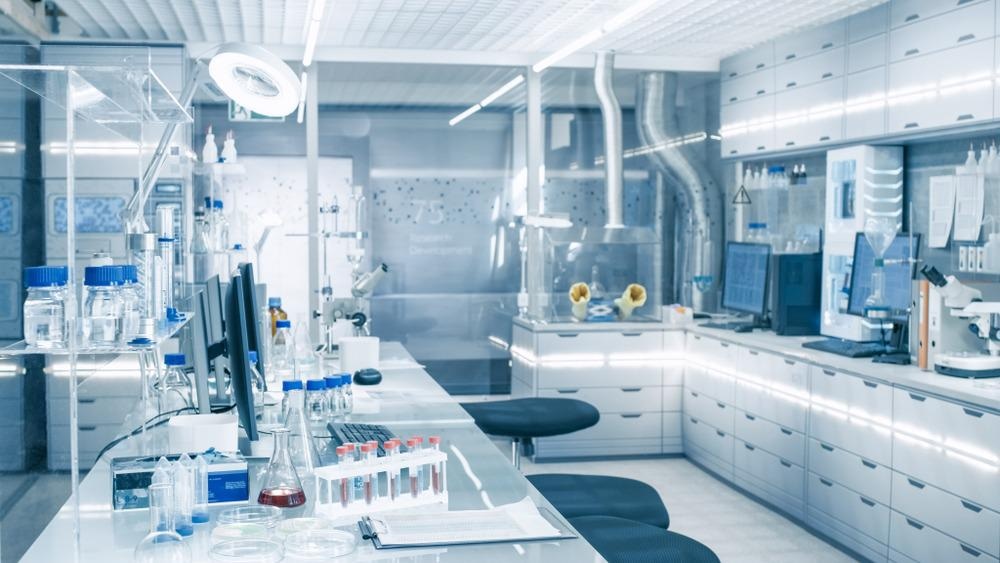 By Surbhi JainReviewed by Susha Cheriyedath, M.Sc.Mar 18 2022
By Surbhi JainReviewed by Susha Cheriyedath, M.Sc.Mar 18 2022In an article recently published in the journal ACS Materials Letters, researchers discussed the designing of shape memory hydrogels by using a universal strategy.

Study: Universal Strategy for Designing Shape Memory Hydrogels. Image Credit: Gorodenkoff/Shutterstock.com
Background
Smart polymeric biomaterials and their significant use in medical devices, such as in tissue engineering and regenerative medicine (TERM), have piqued the interest of researchers. Shape memory polymers (SMPs), which may alter the shape in response to a specific input, have been studied in particular.
Natural polymers are often used as building blocks to create these materials, thus benefiting from their most favorable qualities such as biodegradability, biocompatibility, and the ability to enhance biological activity.
However, even after chemical changes, most natural polymers do not have stimuli-responsive properties or shape memory under physiological settings. This disadvantage has been substantially overcome by the development of hybrid materials.
Temperature-sensitive SMPs, on the other hand, have piqued attention across a wide range of applications. Polyurethanes have stood out among the synthetic and temperature-responsive polymers accessible for biomedical applications due to their biocompatibility and biodegradability, as well as their desirable and tunable mechanical properties.
About the Study
In this study, the authors presented a simple and adaptable approach for converting non-thermoresponsive hydrogels into thermoresponsive systems with shape memory. A thermoresponsive polyurethane mesh was placed within a methacrylated chitosan (CHTMA), gelatin (GELMA), laminarin (LAMMA), or hyaluronic acid (HAMA) hydrogel network as a proof of concept, which resulted in the development of shape memory hydrogel composites.
The team illustrated a universal methodology for the construction of shape memory hydrogels, which was extended to the range of polymers used to make shape-memory biomaterials. Methacrylated polymers such as CHTMA, LAMMA, and HAMA, which had temperature-independent shape memory behavior, were used as precursor biomaterials for the development of hydrogel components. In the proposed setup, the temperature-responsive performance of GELMA was also tested. These polymers were chosen because of their ease of fabrication and well-documented cytocompatibility.
The researchers proposed a simple technique for producing composites that can adapt to specific flaws, including hydrogels stocked with cells via encapsulation or a cell-seeding procedure. The non-thermoresponsive naturally generated materials were developed first. GELMA, CHTMA, HAMA, and LAMMA were made by mixing gelatin (GEL), chitosan (CHT), gelatin (GEL), hyaluronic acid (HA), and laminarin (LAM) with methacrylic anhydride, methacrylic acid, or glycidyl methacrylate, respectively.
GELMA, CHTMA, HAMA, and LAMMA were synthesized as white solids with degrees of substitution (DS) of 52%, 33%, 11% or 29%, and 18%, respectively. 1H nuclear magnetic resonance (NMR) or ultraviolet (UV)- visible (vis) spectroscopy studies were used to validate and quantify the incorporation of methacrylate moieties into the polymer backbones.
More from AZoM: What Do We Know About Conducting Polymers?
The authors examined the shape fixity ratio (Rf) to determine the ability to fix the intended temporary form. The shape recovery ratio (Rr) was also calculated to quantify the composite's ability to return to its original or permanent shape.
Observations
At body temperature (37 °C), excellent shape fixity ratios in the range 50-90% and outstanding shape recovery ratios up to 100% were achieved with the proposed technique. During all shape memory processes, cytocompatibility tests revealed satisfactory survivability with cells on top or encapsulated. The 1H NMR spectra revealed two singlets at ~6.00 ppm, which corresponded to the inserted methacrylic moieties' distinctive hydrogens Ha and Hb, and a singlet at approximately 2.00 ppm, which corresponded to the hydrogens of methyl He , which had an implanted methacrylate moiety.
The Rf values increased up to 90% when the deformation angle was incremented from 20° to 90°. The form memory element in the hydrogel was a mesh created by melt electro-writing. The results demonstrated the formation and accumulation of structures with more complicated architectures in different types of hydrogels. The cytocompatibility test revealed that the proposed system can also be utilized for medical devices in TERM.
It was also observed that the proposed approach could be used to add temperature responsiveness to a hydrogel that already responds to other stimuli (such as light or pH light), which allowed for various shape changes on a single material induced by distinct stimuli.
Conclusions
In conclusion, this study elucidated a novel and versatile method for imparting shape memory properties to virtually any synthetic or natural-based hydrogel to develop new biomaterials that do not have this ability by nature.
The authors emphasized that this simple method can open up a world of possibilities for transferring shape memory capabilities to nearly any synthetic or natural-based hydrogel for a variety of biological and non-biological applications.
They also believe that when an SMPU structure, such as a mesh, is embedded within a non-thermoresponsive hydrogel network, the SMPU would allow the surrounding hydrogel to follow its movement during shape fixity and recovery, thereby imparting shape memory to the overall composite.
Disclaimer: The views expressed here are those of the author expressed in their private capacity and do not necessarily represent the views of AZoM.com Limited T/A AZoNetwork the owner and operator of this website. This disclaimer forms part of the Terms and conditions of use of this website.
Source:
Costa, D. C. S., Costa, P. D. C., Gomes, M. C., et al. Universal Strategy for Designing Shape Memory Hydrogels. ACS Materials Letters 4 701-706 (2022). https://pubs.acs.org/doi/10.1021/acsmaterialslett.2c00107